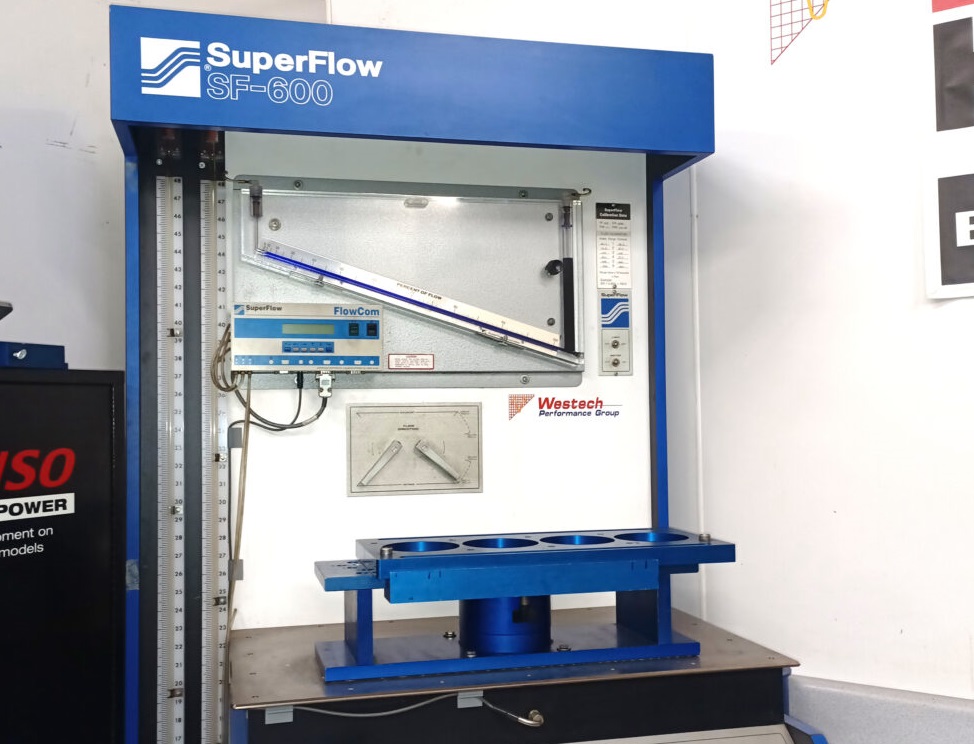Facts to Know About Flow Bench Testing – Part Two

Flow bench testing appears simple on the surface, but it is not. Cubic feet per minute (cfm) statistics have become the industry’s exclusive focus since they are so easy to manipulate, neglecting other data concerning the cylinder head’s performance. You may think that flow bench testing would be simple. However, this is incorrect and will not help you on race day.
Flow bench testing and what you need to know about your engine’s cylinder head and induction system are examined here.
Cylinder head designers and head porters ignore flow numbers, but this does not indicate that flow figures are unnecessary. This nuance is frequently lost throughout the translating process. These numbers are significant and have a purpose. Just not in the sense that most people think of it. Data on airflow provides an understanding of how much power a vehicle can generate. They do not, however, ensure that you will get additional power.
According to industry experts, flow figures alone are meaningless and cannot be utilized to assess a cylinder head’s power potential. In a highly complex system, flow numbers are simply one of many variables that can be used to study the port’s features. The RPM range, acceleration, and power of ten different ports with the same flow statistics can vary drastically.
When designing the correct port/manifold design for an engine’s combination, the intricacy of arithmetic, aerodynamics, thermodynamics, and physics come into play. It takes years of practice to become proficient in these techniques.
Precautions to Take
This is where people make mistakes because flow bench testing and focusing on CFM are so simple. You need to be aware of several dangers.
The first stumbling block is that the flow rate isn’t set for the engine’s actual bore size. This is a widespread issue in the industry. Using a cylinder head with a 4.600-millimeter bore on a 4.500-millimeter bore engine, you’ll lose 50 horsepower due to the ridge left behind. As a result, people buy charges meant to be used on a machine with a 4.600-inch bore but instead flow 390 cubic feet per minute (CFM). As a result, there is an issue with the airspeed when using a valve and port with a specific design flow rate. In addition to killing airflow, you’ve entirely wiped off cylinder head dynamics.
Flow bench testing also has the drawback of not flowing with the valves installed in the engine. The entire testing procedure must replicate the engine for the data to be helpful.
This is why engine makers end up losing money when they pursue cfm figures. Only 50 factors are relevant, but CFM is the only one that the general public is aware of. To construct an induction system and effectively match it to an engine combination, those additional 49 factors are important.
Inadequate calibration of your flow bench is a third common blunder. A scientific calibration plate can be ordered over the phone and used to calibrate a flow bench. Although flow benches are simple to calibrate, this is not the case with most of them, resulting in inaccurate data.
It’s also a good idea to check for leaks. There is always a sliver of room for improvement in any set-up, no matter how perfect.
Only 2 CFM can be statistically insignificant at times. In other cases, it’s 5 or 8 CFM, and to be considered, it must be quantified before a flow test. Only the head designer is concerned about this because my data must be perfect, or all of my other equations will be incorrect.
Conclusion
There’s more to it than just airflow. Valves have a finite amount of time in which they can be open without affecting performance. To put it another way, the timing of the valve events must match the rest of the engine.
Cylinder heads are no different. Cylinder heads should not be judged only on their airflow capacity. Airspeed, port cross-section, port volume and form, and the connection between throat and valve seat size are significantly more critical considerations. Even if you spend all your time working on the flow bench to correct these faults, you will never be successful. It’s a good idea to ensure you understand all the relevant information before purchasing a new engine part or reviewing data from a flow bench test.
